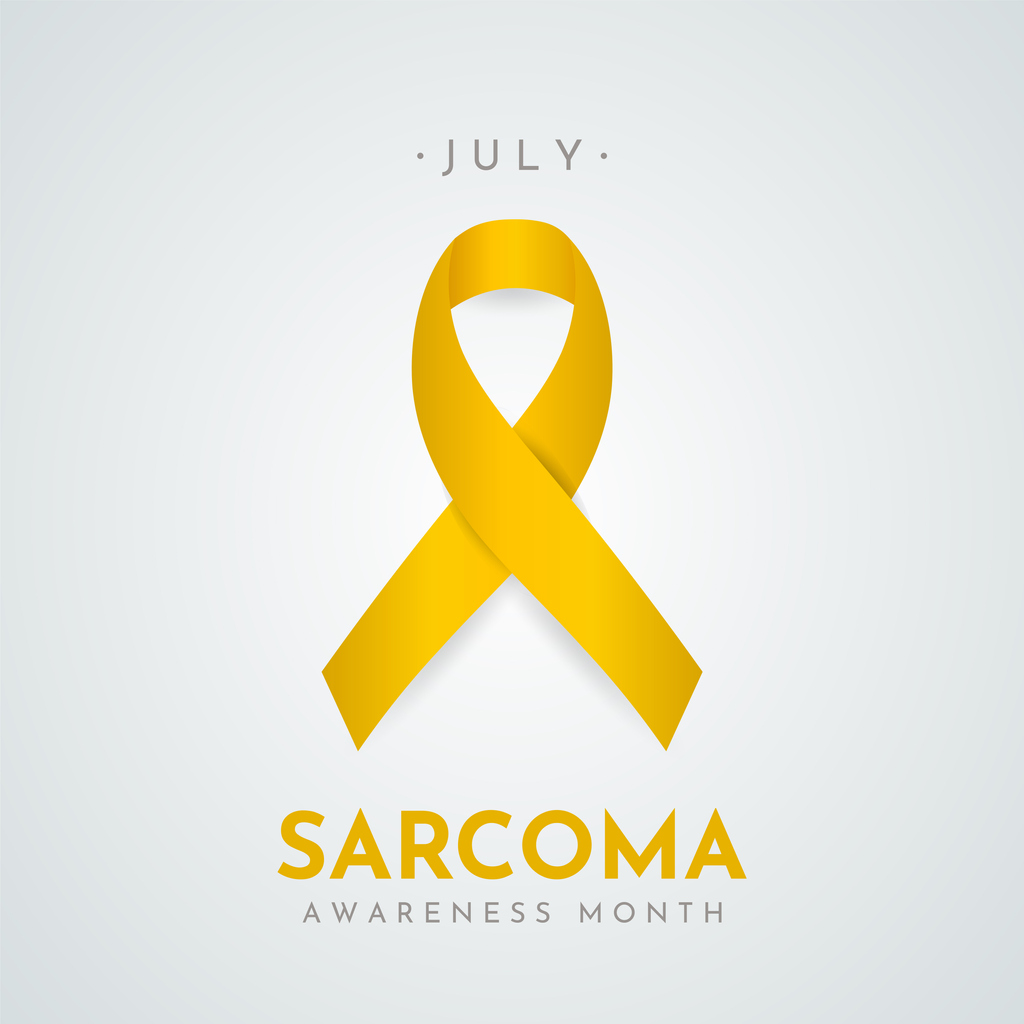Commitment + Clinical Leadership = Better Outcomes

Sarcoma: Risk Factors and Symptoms
Sarcoma is a rare cancer, with about 12,000 soft tissue sarcomas and 3,000 bone sarcomas being diagnosed in the United States each year. Sarcoma accounts for about 1% of adult cancers and around 15% of childhood cancers, making this cancer more common in children.1
July is Sarcoma Awareness Month. To help spread awareness, we’re sharing some facts about sarcoma, the risk factors, and the symptoms.
What is Sarcoma?
Sarcoma is a broad term for cancerous tumors that start in the tissues and bones.2 Sarcomas are different than the carcinomas, the more common tumors, because they grow in connective tissue cells that support and connect other tissues in the body.3
There are over 50 types of soft tissue sarcomas and more than 70 subtypes of sarcoma.4 Bone and soft tissues sarcomas are the main types of sarcoma. However, sarcomas can also develop in the muscles, fat, blood vessels, nerves, cartilage, ligaments, and fibrous tissues.5
The most common types of sarcoma include:
- Undifferentiated pleomorphic sarcoma – cancer that grows in the soft tissues such as the arms and legs
- Liposarcoma – cancer that grows in fatty tissue such as the abdomen and thighs
- Leiomyosarcoma – cancer that grows in the smooth muscles such as the intestines and stomach6
Risk Factors for Sarcoma
Sarcomas form when there is a DNA change in the bone or tissue cells. This causes these cells to grow as cancer cells and eventually form a tumor.4
There is not a known cause for this type of cancer, but there are factors that put people more at risk for developing a sarcoma.7
- History of radiation therapy. Individuals who have received radiation due to cancer are at a higher risk of developing a sarcoma.
- Genetic disorders. Certain inherited disorders including Gardner syndrome, Werner syndrome, and Von Recklinghausen’s disease can increase an individual’s risk of developing a sarcoma.
- Long-term swelling. Swelling in the arms or legs for an extended time can increase the chance of a sarcoma.
- Exposure to chemicals. Certain industrial chemicals can increase the risk of sarcoma.
Because there is no known cause for sarcoma, the best way to prevent it is to avoid exposure to these risk factors when possible.
Symptoms and Signs of Sarcoma
Symptoms of sarcoma will vary depending on the tumor’s location. Some people with a sarcoma may not have any symptoms early on, whereas others will have pain that limits movement.4
Some of the common symptoms of sarcomas include:
- A lump on the skin
- Swelling
- Bone pain
- Abdominal pain
- Pain in the arm or leg
- Trouble moving the arm or leg
- Back pain
- Weight loss
- An unexpected broken bone with no injury or cause8
Sarcomas can be hard to spot or diagnose because they can occur anywhere on the body, and symptoms may take a while to show.
Diagnosis and Treatment for Sarcoma
If an individual shows any symptoms of sarcoma, doctors will perform tests to find out if cancer is present.
Doctors will ask about a patient’s medical history, family history, and symptoms, as well as perform a physical exam. Imaging tests are done to look at susceptible areas and to see if cancer has spread. Different imaging tests can be used, including CT scans, MRIs, ultrasounds, and PET scans.9
If a doctor suspects a sarcoma, they will perform a biopsy. During a biopsy, a small piece of the tumor is removed for testing. Doctors will use this sample to determine if the tumor is sarcoma, another type of cancer, or benign (non-cancerous).
Treatment options are based on each individual case, preferences, and doctor recommendations. Most treatment options are the same as with other types of cancer: radiation therapy, chemotherapy, and surgery.10
Sarcoma is likely to be cured if is detected and has not spread to other areas of the body. The survival rate is between 60 and 75%.3
Learn More Today
If you know someone with symptoms of sarcoma, or you want to minimize your risk of sarcoma, take the time to learn more today.
Saber Healthcare is an organization dedicated to providing consultant services to long-term care providers. This article is for informational purposes and is not meant to be seen as professional advice. Please consult with a medical expert before relying on the information provided.
Sources
- https://www.medicalnewstoday.com/articles/301762.
- https://www.cancer.org/cancer/soft-tissue-sarcoma/about/soft-tissue-sarcoma.html#:~:text=A%20sarcoma%20is%20a%20type,any%20part%20of%20the%20body.
- https://www.webmd.com/cancer/sarcoma.
- https://my.clevelandclinic.org/health/diseases/17934-sarcoma.
- https://www.hopkinsmedicine.org/health/conditions-and-diseases/sarcoma#:~:text=Sarcomas%20are%20rare%20cancers%20that,in%20the%20U.S.%20each%20year.
- https://www.cancer.org/cancer/soft-tissue-sarcoma/about/key-statistics.html.
- https://www.cancer.org/cancer/soft-tissue-sarcoma/causes-risks-prevention/risk-factors.html.
- https://www.mayoclinic.org/diseases-conditions/sarcoma/symptoms-causes/syc-20351048.
- https://www.cancer.org/cancer/soft-tissue-sarcoma/detection-diagnosis-staging/how-diagnosed.html.
- https://www.cancer.org/cancer/soft-tissue-sarcoma/treating.html.
